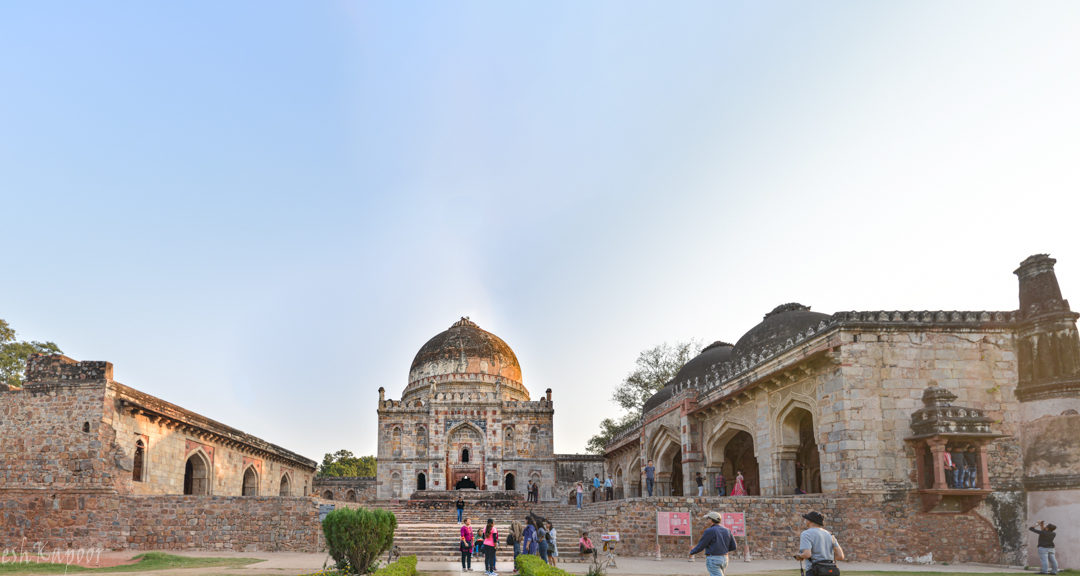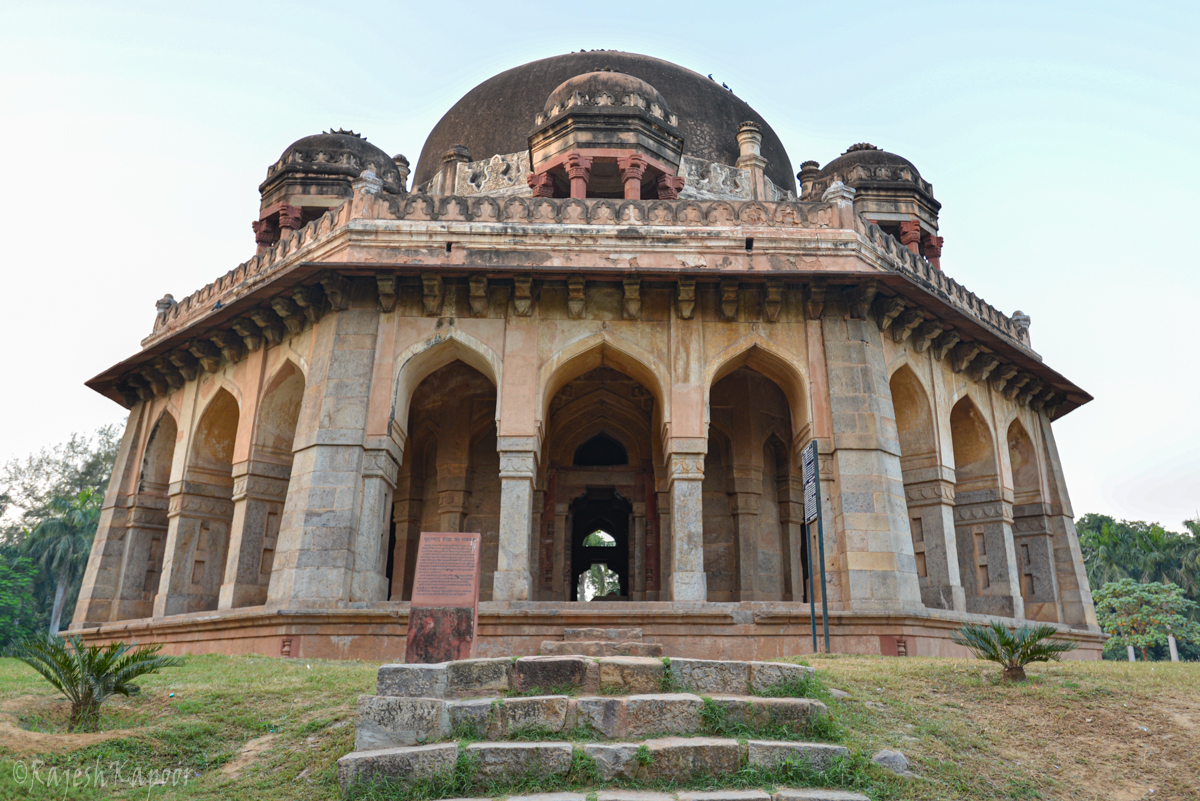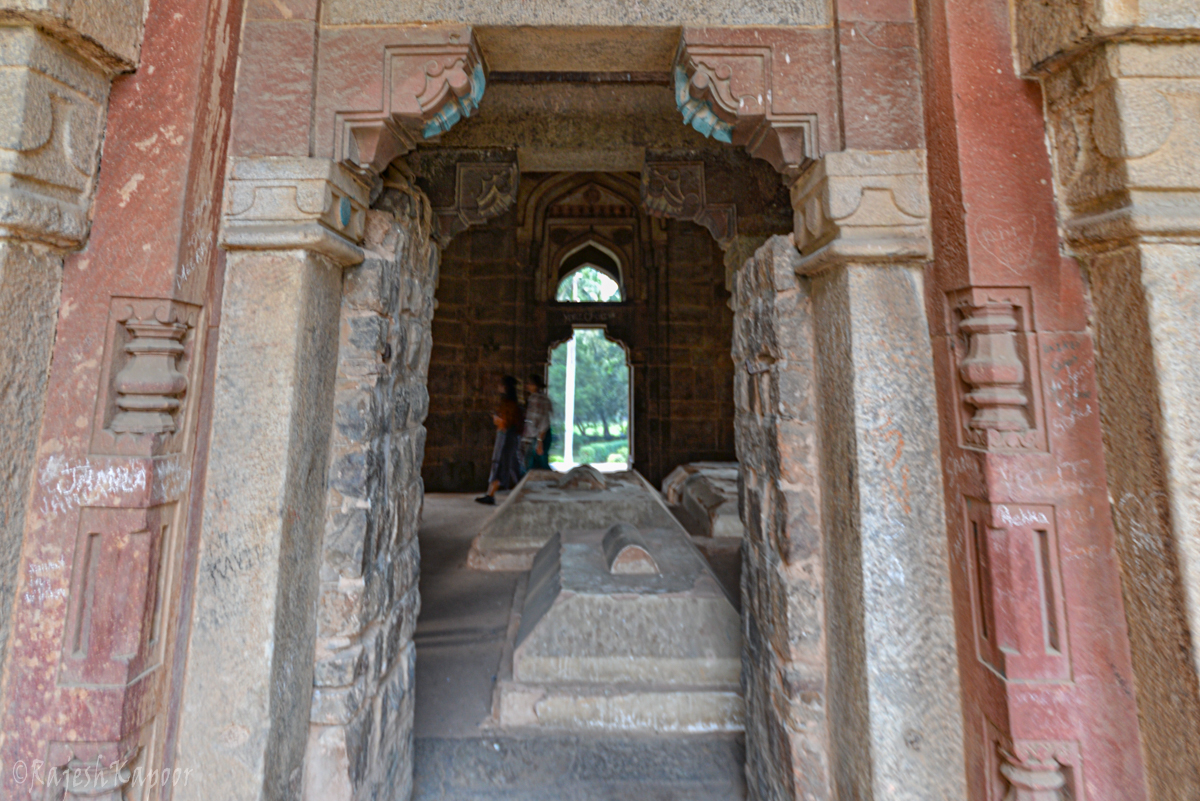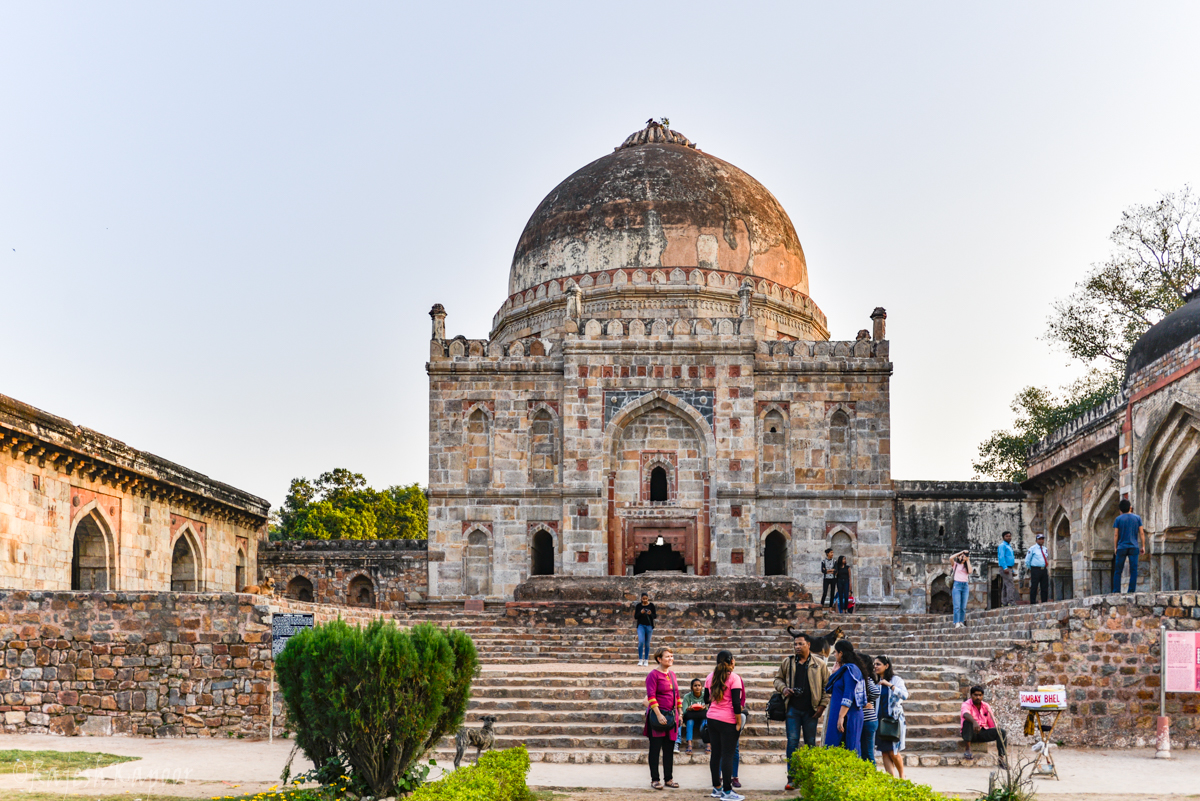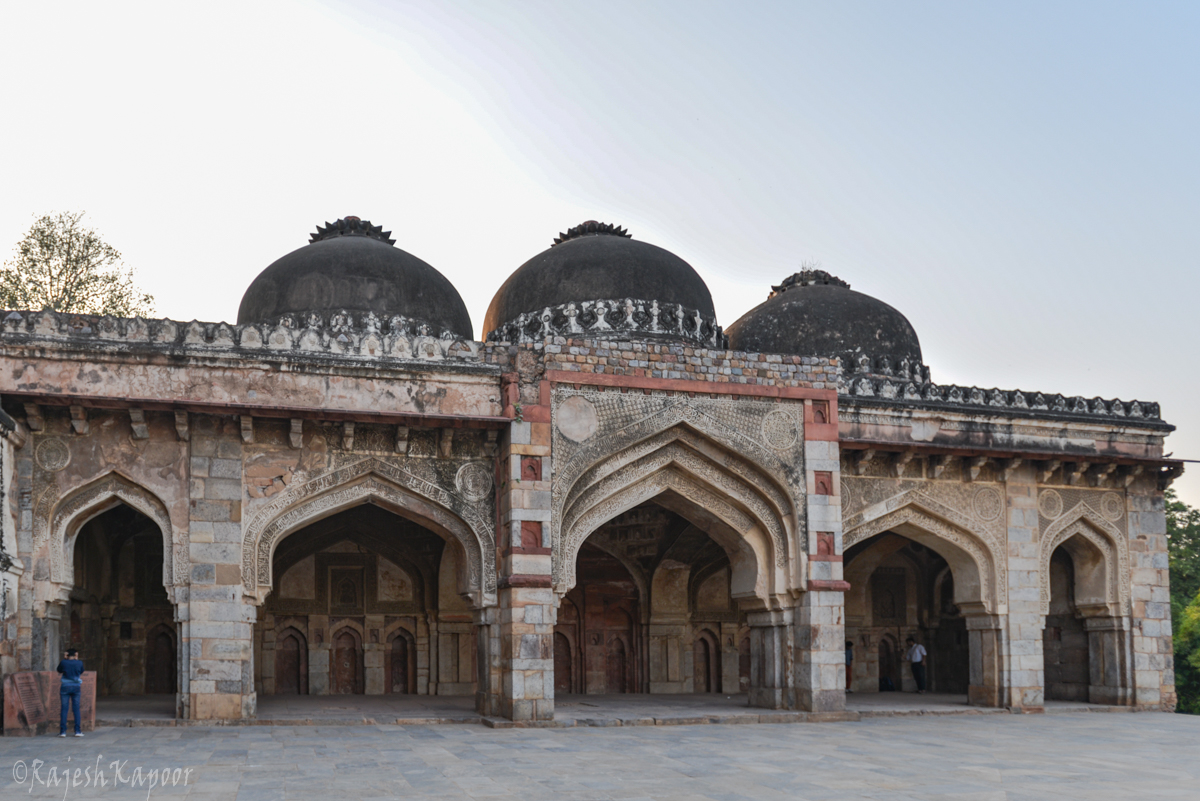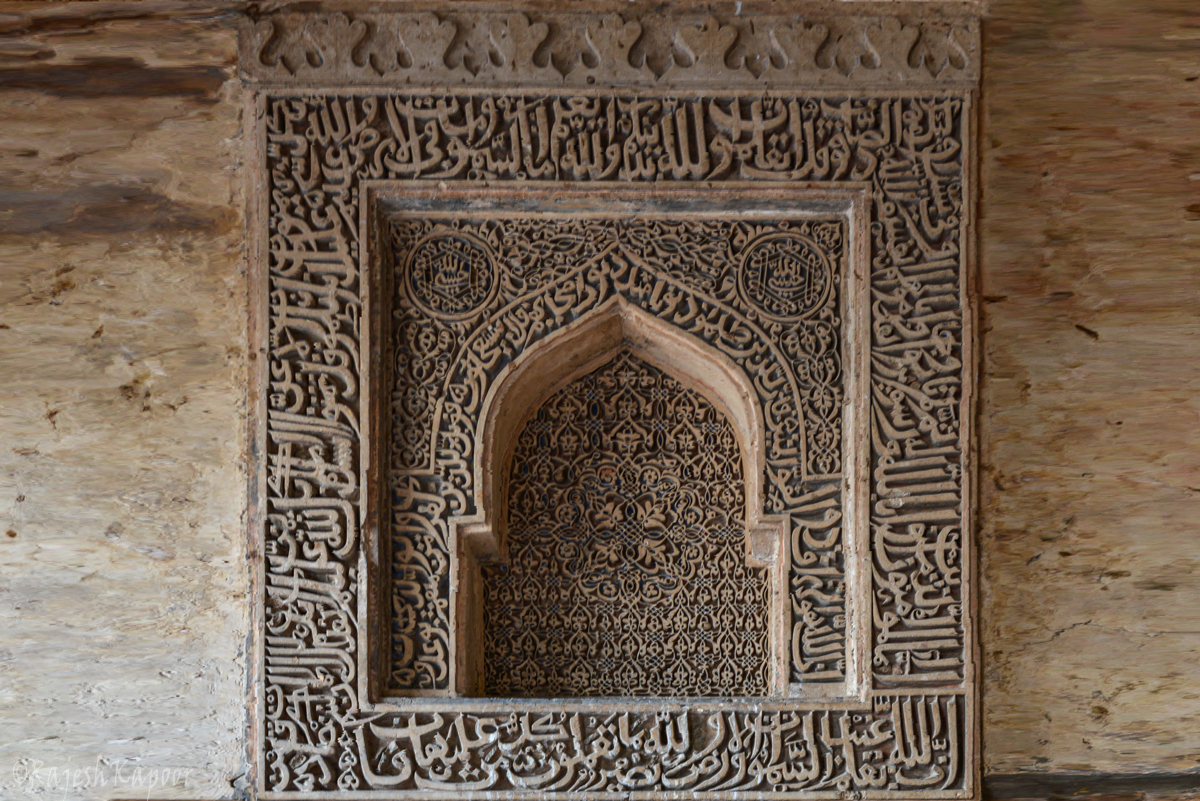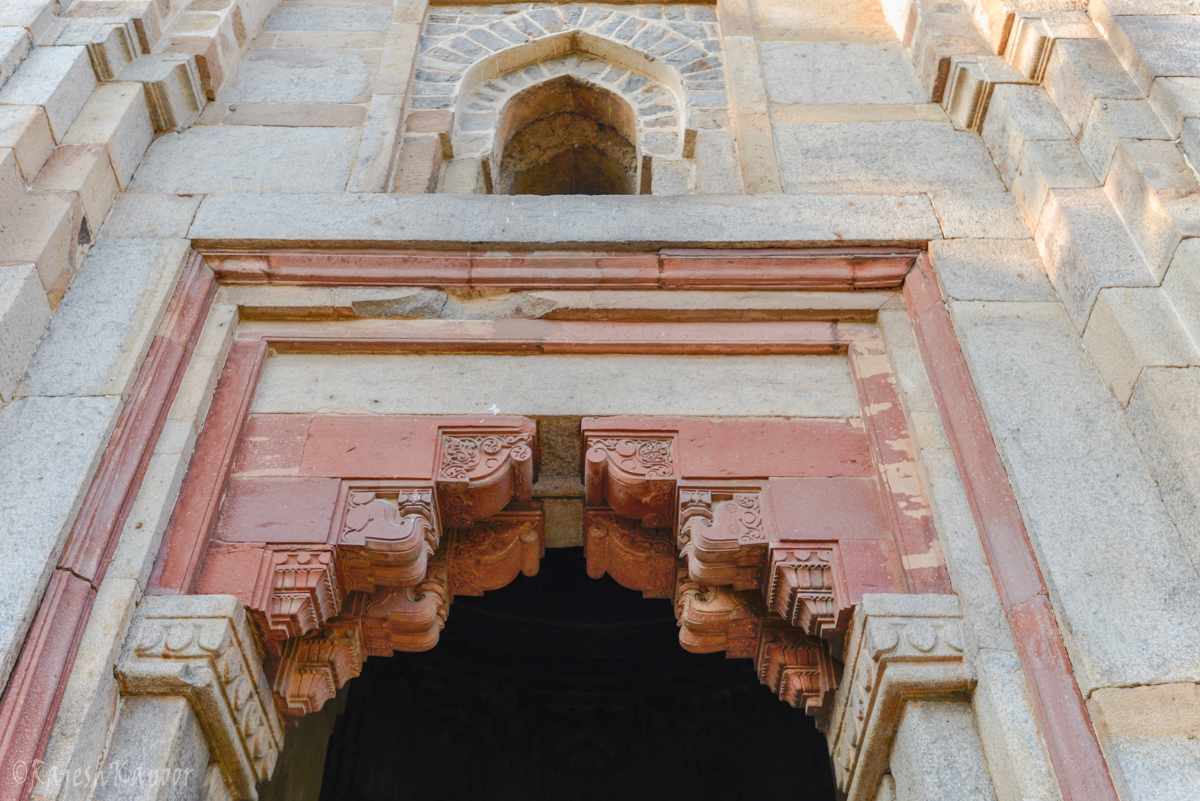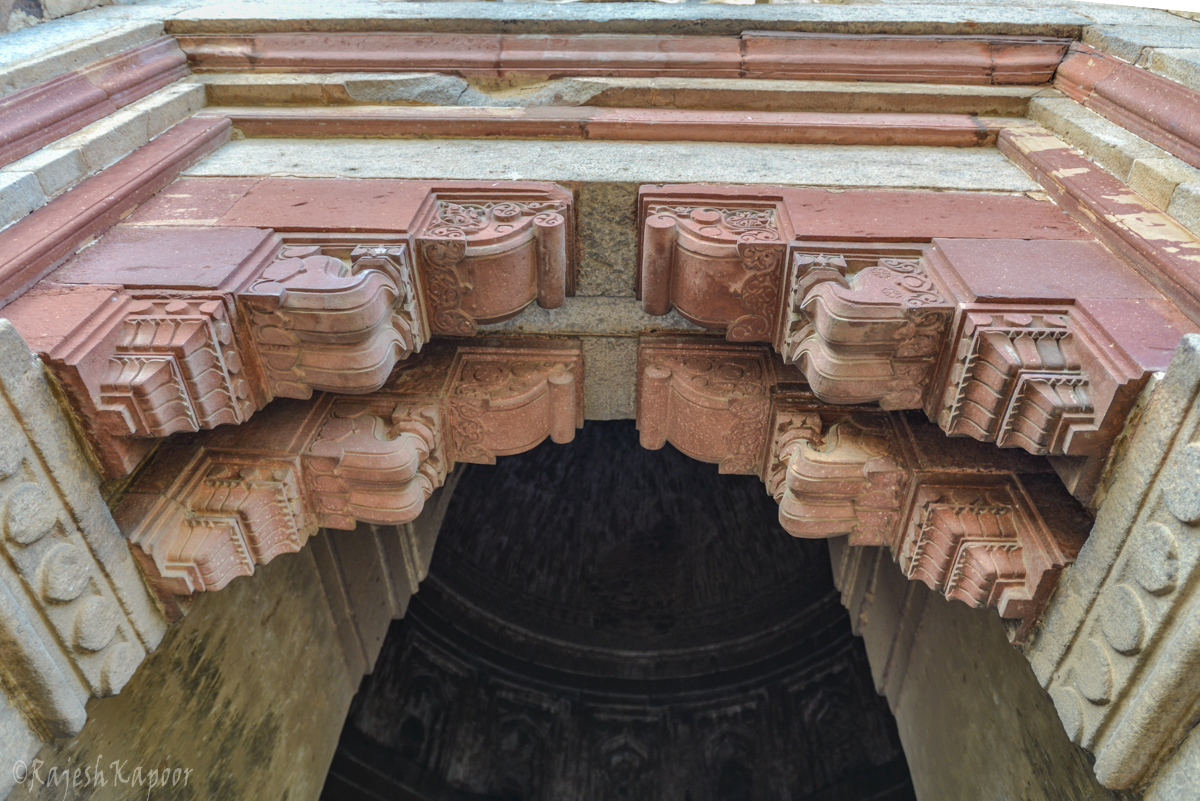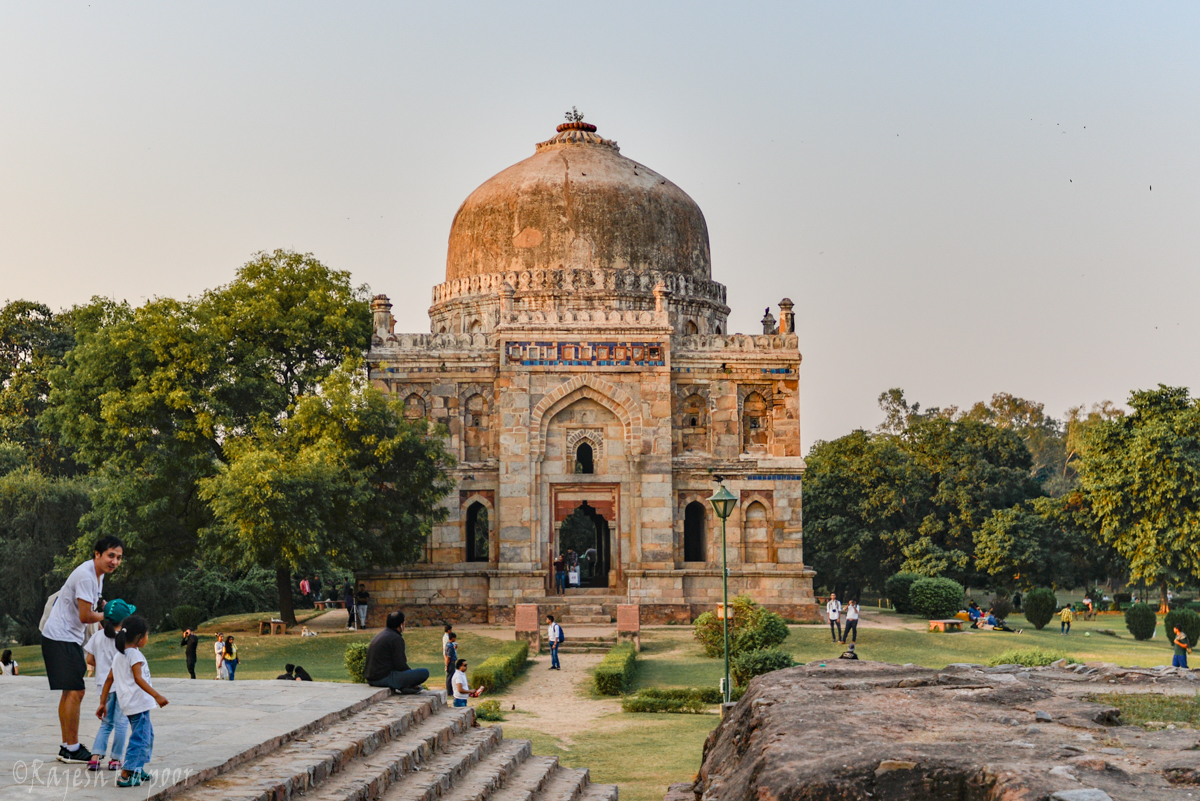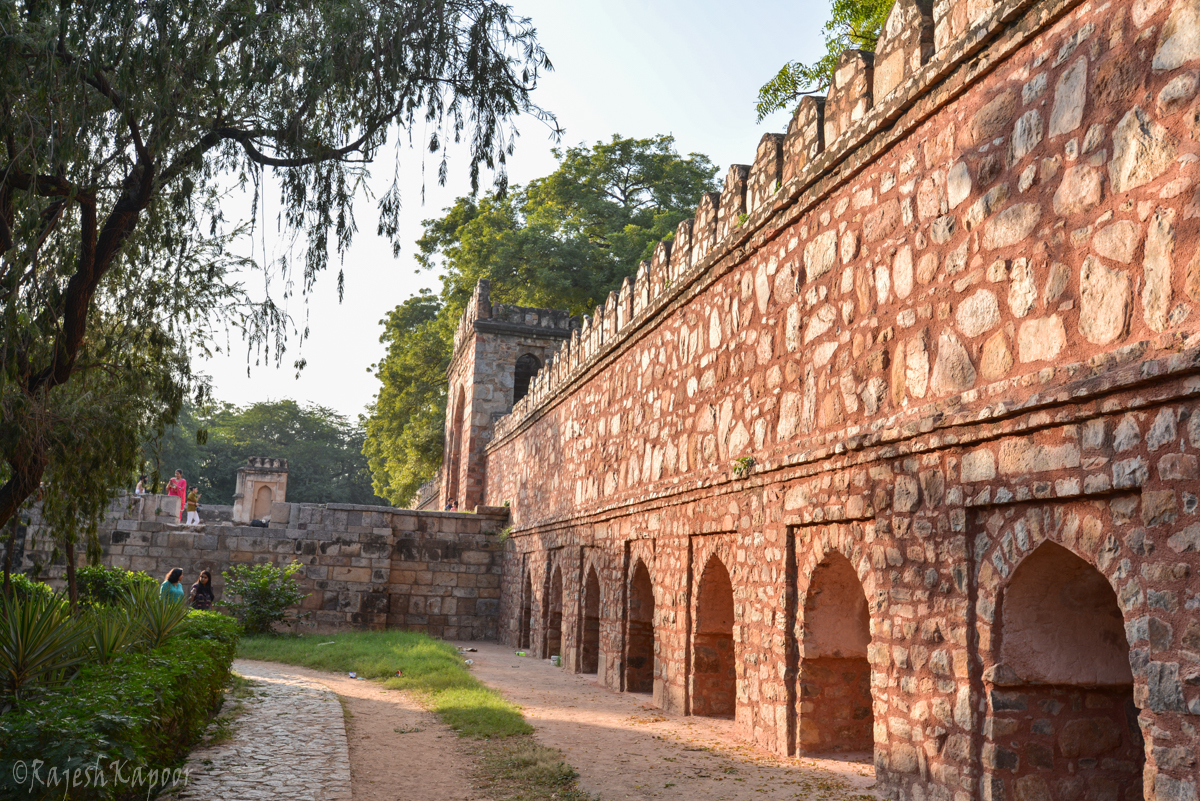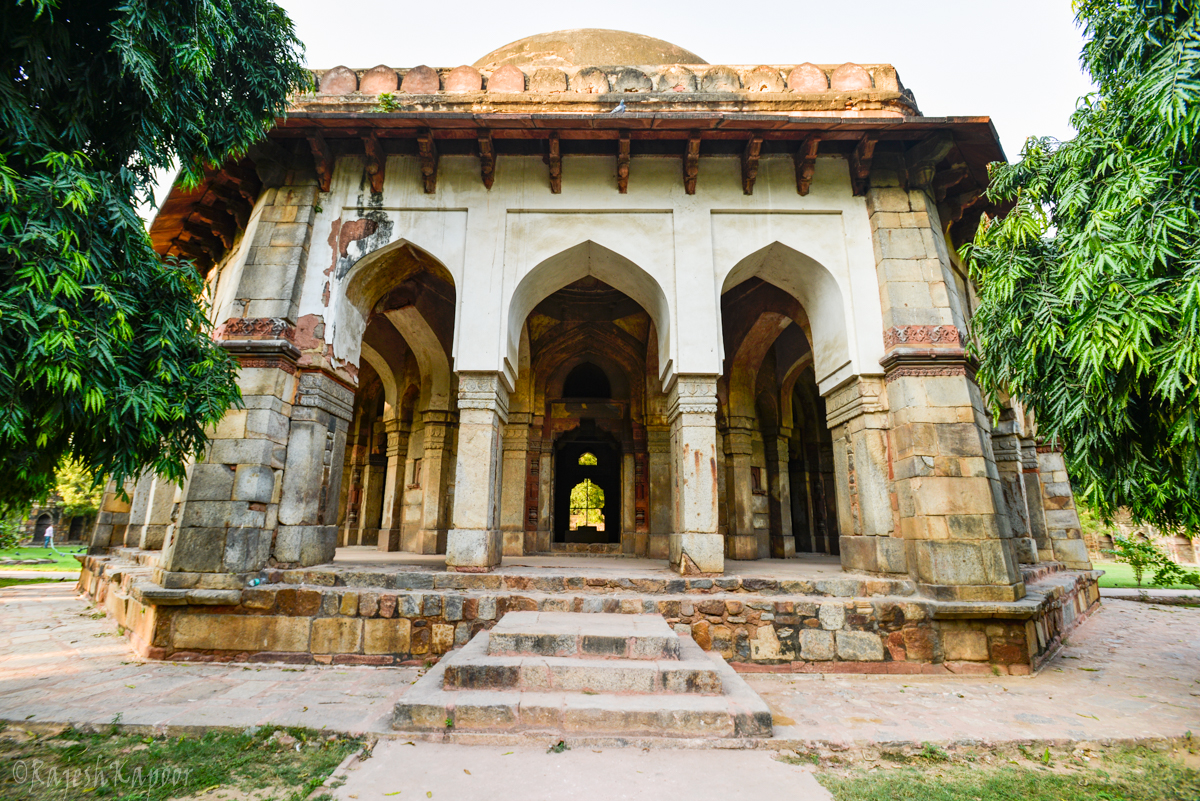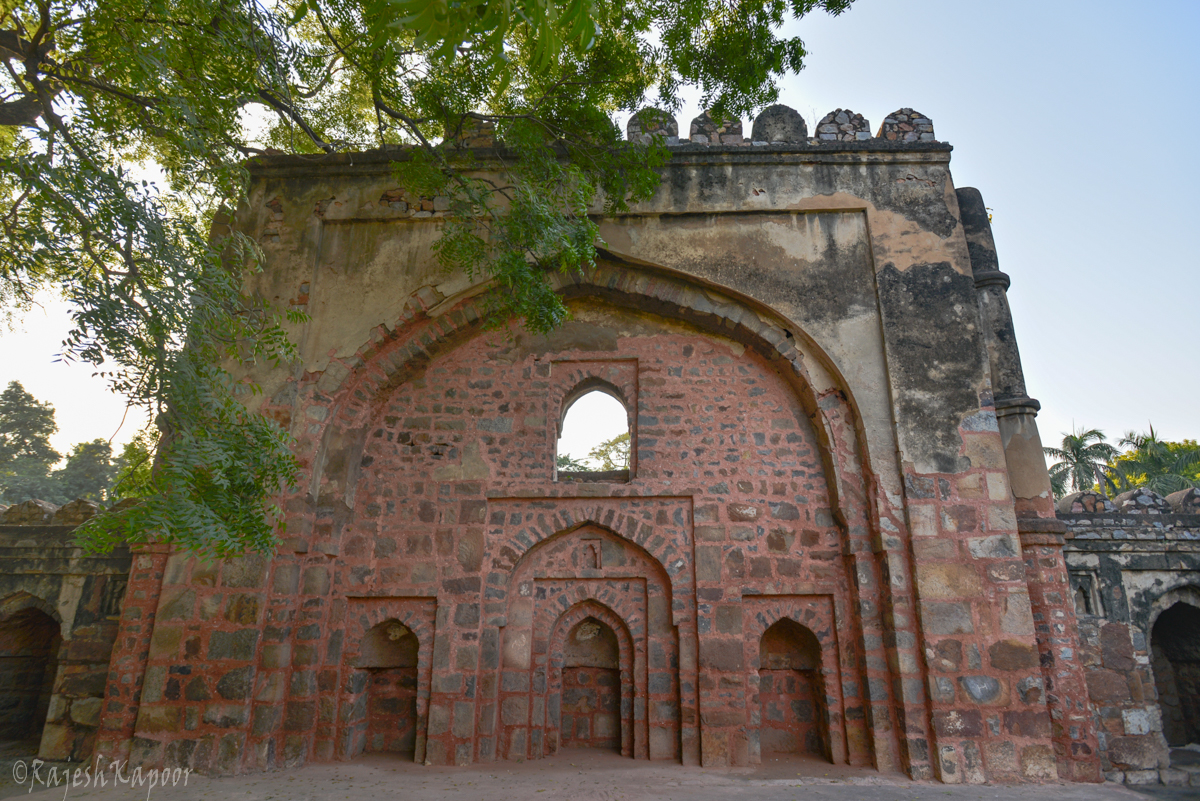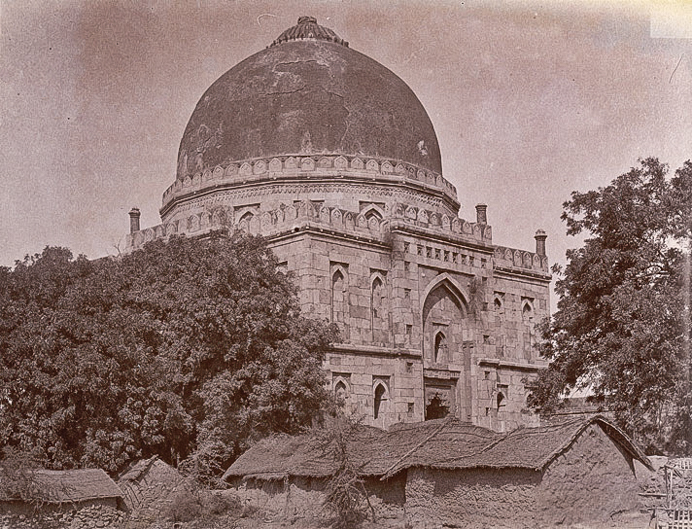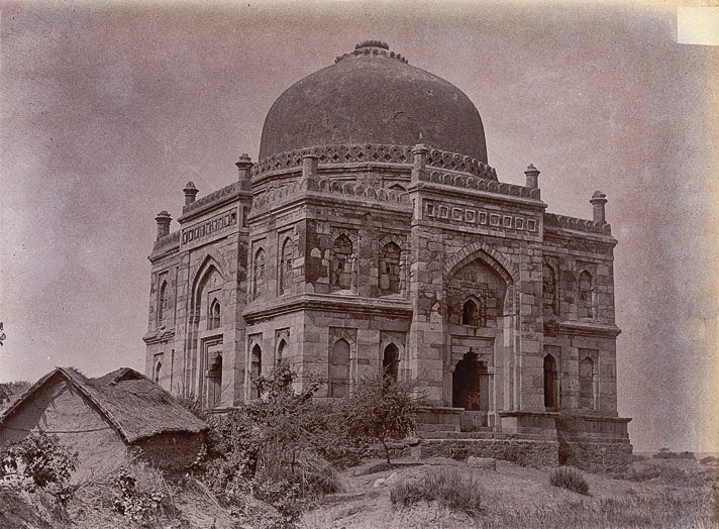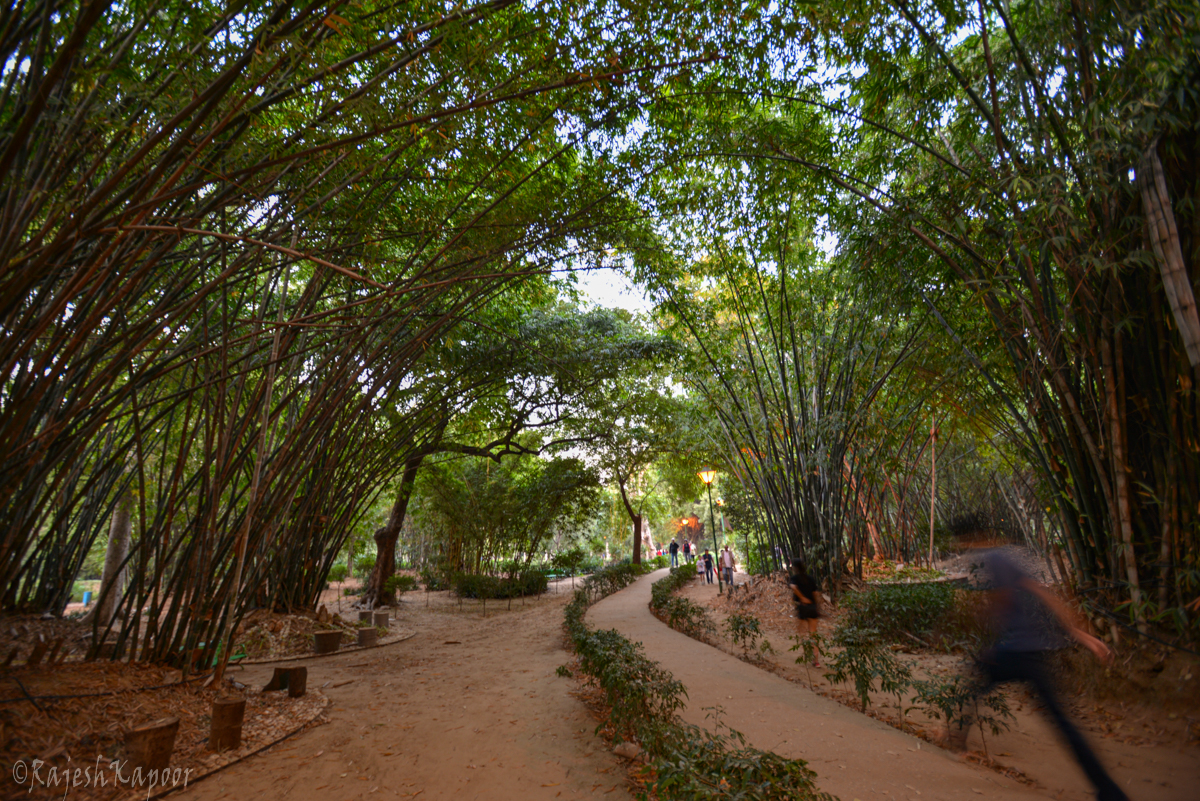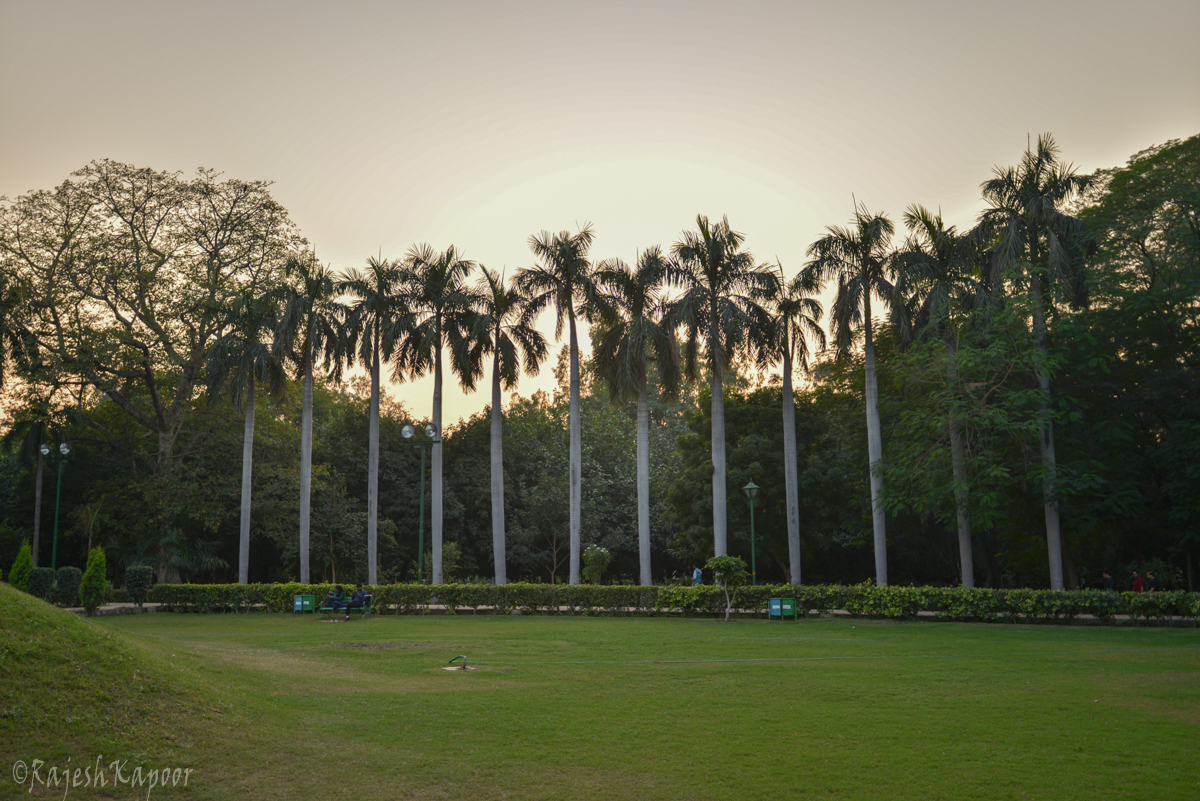Lodi Garden is a well-known and popular garden in New Delhi with its numerous walking tracks amongst lush greenery all around. While New Delhi’s elite – politicians, bureaucrats and power-brokers take their morning walks here and network for mutual benefit, the masses too use the garden for family picnics, for twogether-time, for solitude and for everything else in between.
It may, however, come as a surprise to you that the garden is actually home to ruins of numerous mausoleums and mosques. And not just ordinary ones – they belong to the royalty of Delhi’s past and are important relics of Delhi’s rich history.
Tomb of Muhammad Shah
The tomb of Muhammad Shah is the earliest important structure in the garden. Muhammad Shah’s son and successor, Ala-ud-din Alam Shah built this tomb. This is probably the only Sayyid dynasty structure, of any significance, in existence today in Delhi.
Octagonal in shape, its corner columns buttresses are sloping inwards. A colonnaded walkway surrounds the main chamber. The centre of each face, on the upper storey, contains an eight pillared chhattri. Lotus finials crown the chattris and the central dome.
The dome ceiling has beautiful incised plaster work ornamentation.
There are eight graves within the tomb, the one in the centre being in all probability that of Muhammad Shah.
Surprisingly, the tomb was also known as Mubarak Khan-Ka-Gumbad, though the mausoleum of Mubarak Khan, predecessor and father of Muhammad Shah, lies elsewhere.
Bada Gumbad and Mosque
A compound having three structures on a raised platform lies to the north of the Muhammad Shah’s tomb.
First one is a structure called Bada Gumbad (Big Dome) which is believed to be a gateway by some and a tomb by others. There are no graves extant today, however. Built during the reign of Sikandar Lodi, the building has a square base and a lofty dome. The building appears to be double storeyed from outside, though actually it is not. It is considered as one of the finest examples of Lodi era monuments.
Attached to it is a highly ornate mosque. The east facing external wall as well as the interior of the mosque are richly ornamented in plaster with foliage and geometric designs and qur’anic verses. Other interesting elements are the jharokha and the sloping corner-tower.
Facing the mosque on the other side of the courtyard is a structure of similar dimensions, which is understood to be a Mehman-Khana (guest house).
Shish Gumbad (Glass Dome)
This dome derives its name from the blue glazed tiles with which this mausoleum’s exterior was ornamented. Only a few remnants of such blue tiles can be seen now. The ceiling is decorated with floral carvings and verses from the Quran in incised plaster. Externally it is like the Bara Gumbad, though smaller in size, giving an impression of a double storey building while actually being a single storey internally.
The tomb contains eight graves of which only one bears the kalamdan, signifying a male grave. It is not known who erected this building or who is buried here, but its position seems to indicate that it is the mausoleum of someone important from the Lodi era. Though Gorden Hearn mentions it to be a tomb of Ibrahim Lodi (The Seven Cities of Delhi, 1906), his tomb is in Panipat.
Tomb of Sikandar Lodi
The most significant monument within the garden is the Tomb of Sikandar Lodi who died in 1517. Sikandar Lodi, the most significant ruler of the dynasty, had shifted his capital to Agra, where he died. His body was brought to Delhi and buried here. The tomb was erected in 1518 by his son and successor Ibrahim Lodi.
The tomb represents an important phase in the evolution of Indian architecture. It is located on a raised garden with fortified compound walls. It is probably the earliest example of garden mausoleums. The interior is decorated with multi-coloured enamelled tiles, the first such use of tiles that continued in buildings constructed thereafter.
The structure looks quite like that of the tomb of Muhammad Shah with colonnaded walkway around the main chamber. It, however, does not have chattris on top.
A wall mosque exists in the middle of the western wall of the enclosure,
Athpula
A little to the east of Sikandar Lodi’s Tomb lies a bridge known as Athpula (Ath-eight). It has seven arches over eight piers. The bridge is believed to have been constructed by one Nawab Bahadur during Akbar’s reign. It was built over a tributary of Yamuna river that flowed through this area and joined with Barahpula. The stream has since disappeared, and an artificial lake has been created below the bridge.
This bridge was also known as ‘Khairpur ka Pul’ as it was located within the Khairpur village.
The Garden
These Lodi era monuments had fallen into disrepair and villages grew around them over a period of time. The Bada Gumbad mosque was being used for many years as a cow-shed and was surrounded by squalid hutments.
Bada Gumbad Masjid, Delhi, H H Cole, 1880s. Courtesy British Library, Shelfmark: Photo 1003/(899) Bada Gumbad surrounded by hutments, H H Cole, 1880s. Courtesy British Library, Shelfmark: Photo 1003/(897) Sikander Lodi’s Tomb, Delhi, H H Cole, 1880s. Courtesy British Library, Shelfmark: Photo 1003/(903) 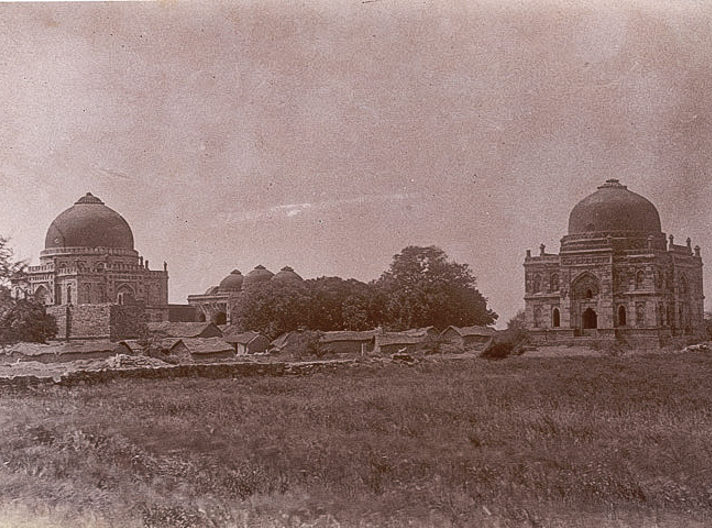
Tombs of Lodi Kings in Delhi, H H Cole, 1880s. Courtesy British Library, Shelfmark: Photo 1003/(896) Sheesh Gumbad, Delhi, H H Cole, 1880s. Courtesy British Library, Shelfmark: Photo 1003/(900) Distant view of Sikander Lodi’s Tomb, Delhi, H H Cole, 1880s. Courtesy British Library, Shelfmark: Photo 1003/(906)
It was only after New Delhi was well established that in 1936 the villages were removed to renovate the garden and preserve the monuments. Lady Willingdon, the wife of the then Governor General of India, landscaped the area and turned it into an attractive garden. The garden was, therefore, named after her as Lady Willingdon Park. It was used primarily by British officers and their families.
After independence the garden was renamed, appropriately, as Lodi Garden. The garden was redesigned in 1968 by J A Stein, an eminent American architect, who also designed many of the modern buildings around the Lodi Complex.
Today, visitors throng Lodi Garden every day. Wonder how many of them have an inkling of the history of the ruins they hover in and around.
Post Script : Some historians mention that a garden called Bagh-e Jud existed here from earlier times (Jud as in Judwa/Jod/Joint). However, some others believe that Bagh-e Jud lies elsewhere. It is also said that the name of the elite New Delhi locality Jor Bagh, which is located nearby, is Hindi form of Bagh-e Jud, in which case the correct pronunciation would be Jod Bagh.

